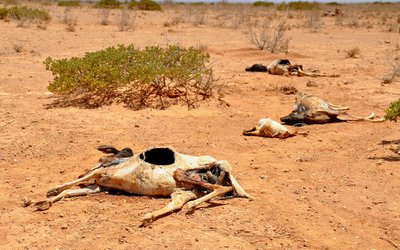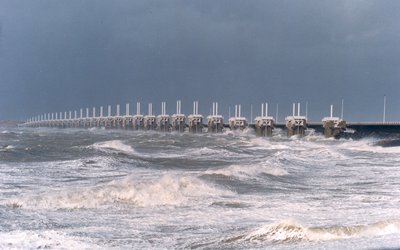
By Wilfried ten Brinke
This article is based on a large number of (scientific) sources assembled by the ClimateChangePost. Check out www.climatechangepost.com for more details.
This article is the third of five articles on climate change and Europe’s security that will be posted the coming days. The first article presented an overview on climate-related security risks, and the second focused on causal relations between climate change and violence. The following two articles will focus on climate change and mass migration, and adaptation strategies to relieve climate change impacts on security risks.
Hazards rarely create disasters, the context does
Effects of climate change extremes cannot be understood independently of larger social, economic and cultural changes. According to disaster risk experts hazards themselves rarely create disasters, but instead it is the context in which the hazard occurs that contributes to disastrous outcomes. This is relevant to climate change-related extreme events as well. The context in which climate extremes and hazards occur is constantly changing as a result of many factors, including rates of economic development and natural resource exploitation, urbanization, deforestation, land use changes, rising global food prices, warfare, corruption, trade dependency, macroeconomic policies, etc.
The relationship between disasters and fragility is often mutually reinforcing: disasters put additional stress on already stretched governance systems, decrease economic opportunities, reduce resources, and displace people. A lack of safety nets, preparedness, insurance mechanisms, and other methods to cope with the impacts of disasters can fuel grievances, especially if government or international assistance is inadequate or inequitably distributed. Poorly designed humanitarian interventions can also exacerbate tensions and increase the risk of conflict. In addition, in fragile and conflict-affected situations, disasters can undermine or override efforts to bolster resilience, increasing the severity of the disaster’s impact. Conversely, disaster risk reduction and effective disaster management efforts can provide opportunities to improve resilience to climate-fragility risks and build peace.
Disaster frequency is increasing
Disaster frequency appears to be increasing. The number of reported disasters globally increased from about 100 events per decade in the 1900-1940, to 650 per decade in the 1960s, to 2000 per decade in the 1980s. By the 1990s this number had reached almost 2800 events per decade. Though this increase is partly due to a better registration of disasters, the number of weather-related disasters has clearly increased over the last decades.
It is estimated that global costs of weather-related disasters alone have increased from an annual average of USD 8.9 billion in 1977-1986 to USD 45.1 billion in 1997-2006. Floods and drought are among the most prominent causes of these disasters. From an assessment of historical droughts (from 1900 to 2004) it was concluded that ‘more than half of all deaths associated with natural hazards are now classified as drought related, and only floods rank higher in terms of the number of people affected.’
Not just the damage due to floods, but also the frequency of floods has increased, both in Europe and worldwide. Flood risk increase over recent years has mainly resulted from the increase of the vulnerability of people and their belongings in flood-prone areas: more people have moved to low-lying areas near rivers and in the coastal zone.
Mortality due to climate change is very likely to increase further through a range of direct effects (such as more intense heat waves, floods, and fires), indirect effects (such as declines in water quality and food security, and changes in disease vectors), and through social and economic disruptions (such as increased poverty and migration).
Urbanization increases vulnerability
The increase of disaster frequency is partly linked to urbanization. More than half of the world’s current population lives in cities. Over the next several decades, the largest urban population changes are expected to occur in coastal areas, particularly in Asia and Africa. Economic, social, and environmental costs of extreme events are high in urban areas due to high concentrations of resources and people. These costs are likely to escalate as a result of growing populations in coastal cities, many of which are already highly vulnerable to sea level rise, tsunamis, and other hazards.
The low-lying areas along the world’s coasts constitute ‘only’ 2% of the world’s land area but are inhabited by 10% of the world’s population (and 15% of the world’s urban population). Furthermore, 65% of the world’s largest cities, with a population of at least 5 million residents, are located in the coastal zone. The global population exposed to the ‘1 in 100 year’ extreme sea level (i.e. the sea level that has a 1% chance of being exceeded in an arbitrary year) has increased by 95% from 1970 to 2010 with about 270 million people.
Photo: News Muse (www.flickr.com)








